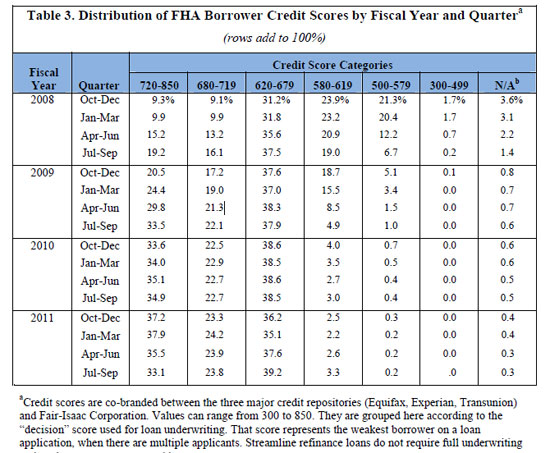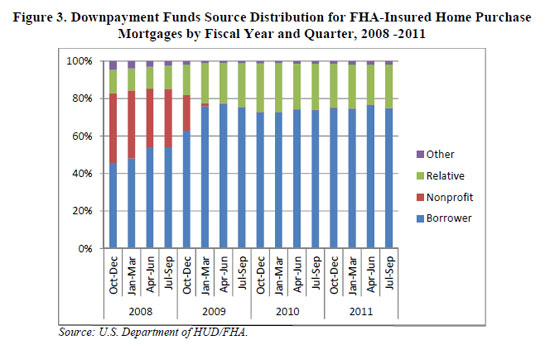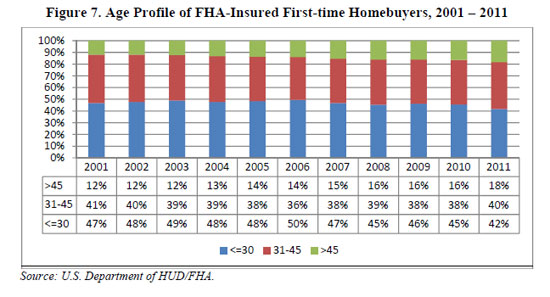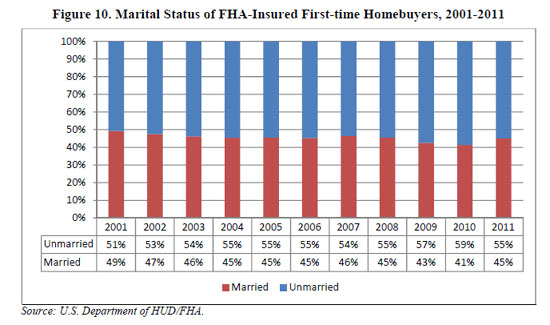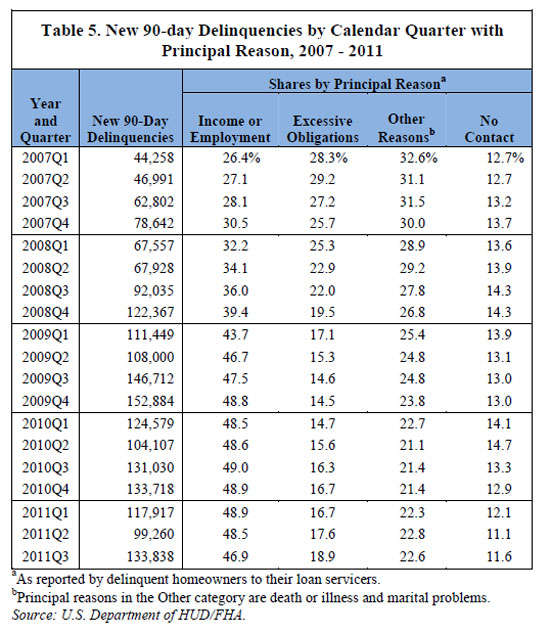The FHA has become the primary source of mortgage financing for many Americans. Over the short time span of 2007 to2009, FHA mortgage financing increased by more than 400%. The number of home purchases done using FHA financing exploded from 278,394 in 2007 to 1,109,582 in 2010.
The FHA has increased its market share primarily due to two major factors. Private mortgage lenders have largely abandoned the mortgage market due to high levels of losses on foreclosures and Fannie Mae and Freddie Mac have dramatically toughened underwriting standards since they went bankrupt. The FHA is the only lender left that still offers loans with minimal down payments, high debt ratios and relatively weak credit scores. In addition, the interest rates on FHA mortgages are usually lower than comparable loans from Fannie Mae or Freddie Mac.
Based on data from the FHA, here is the profile of the average FHA borrower.
1. Most FHA borrowers come from only 10 states. The three states with the largest number of FHA borrowers are California, Texas and Florida.
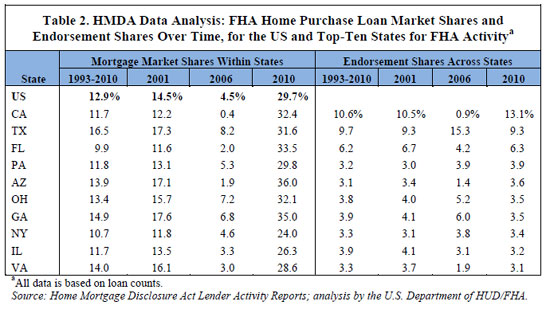 2. The average FICO credit score for FHA borrowers recently reached approximately 700. Approximately 37% of FHA borrowers in 2011 had credit scores in the 620 to 679 range.
2. The average FICO credit score for FHA borrowers recently reached approximately 700. Approximately 37% of FHA borrowers in 2011 had credit scores in the 620 to 679 range.
3. Almost 80% of FHA borrowers purchasing a home were able to come up with the down payment from savings while the other 20% obtained the down payment from gift money.
4. FHA statistics show that the vast majority of FHA borrowers are white, followed by Hispanic and African American buyers. The FHA leads the market in lending to minorities with a 46% market share of minority borrowers.
5. The average age of FHA borrowers has increased in recent years. Only 42% of all FHA borrowers in 2011 were under the age of 30. FHA borrowers over the age of 45 represented 18% of all borrowers in 2011.
6. The number of FHA borrowers who were married or unmarried was about equal, with married borrowers constituting 45% of borrowers in 2011. The ratio of married vs. unmarried borrowers has remained relatively constant over the past 10 years.
7. The primary reasons for default by FHA borrowers is due to problems with income or employment, excessive obligations or other reasons. As of October 2011, a very large number of FHA borrowers were in default, with 17% of all loans past due by 30 days or more.
A potential borrower should assess his or her own situation compared to the statistics for the average borrower shown above to determine if home ownership is the best long term financial decision. As it presently stands, almost 1 in 5 FHA borrowers winds up having payment difficulties and winds up defaulting on the mortgage. From a standpoint of building personal financial wealth, it does not make sense to take on excessive debt obligations in relationship to income. A discussion with a reputable financial adviser (not a real estate agent or mortgage lender) should be the first step before making the decision to become a home owner.
